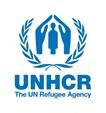Standardized Expanded Nutrition Survey 2019
Refugee Camp: Gorom
South Sudan, 2019
Get MicrodataIdentification
SSD_2019_SENS-Gorom_v01_M
Standardized Expanded Nutrition Survey 2019
Refugee Camp: Gorom
| Name | Country code |
|---|---|
| South Sudan | SSD |
Other Household Survey [hh/oth]
Sample survey data [ssd]
Households
Children 0-23 months
Children 6-59 months
Women 15-49 years
Version
Version 2.1: Edited, anonymous dataset for licensed distribution.
2020-01
Scope
The SENS covered the following topics:
- Children 0-23 months: feeding practices
- Children 6-59 months: prevalence of acute malnutrition, underweight, stunting and anaemia, coverage of vit A supplementation, and prevalence of diarrhoea
- Women 15-49 years: prevalence of anaemia
- Households: food security
| Topic |
|---|
| Health and Nutrition |
| Health |
| Food security |
| Food Distribution |
Coverage
Gorom Refugee Camp
Children 0-59 months Women 15-49 years Refugee households.
A household was defined as: a group of people who live together and routinely eat out of the same pot. Where two families share the same pot, they were assessed as one household even if they lived in the same compound.
Producers and sponsors
| Name |
|---|
| UNHCR |
| ACROSS |
| WFP |
| UNICEF |
Sampling
An exhaustive survey was conducted as the total refugee population size of Gorom camp was below 2,500 people rendering sampling unnecessary. All children 6-59 months/ (0-23 months for IYCF) in the camp were surveyed. All the households were included for the anthropometry, anaemia and IYCF modules. For the women questionnaire and the food security modules, half of the households were sampled. The surveys were undertaken by six teams composed of four members each (one team leader, one haemoglobin measurer, one anthropometric measurer/translator and one anthropometric/haemoglobin measurement assistant). Each team was allocated the villages to survey. Village locations and boundaries was discussed during the training to ensure all teams knew where to go. If an individual or an entire household was absent the teams were instructed to return to the household or revisit the absent individual on the same or the next survey day. If they were unsuccessful after this, the individual or the household was recorded as absent, and they were not replaced with another individual. If the individual or an entire household refused to participate then it was considered a refusal and the individual or the household were not replaced with another. If a selected child was living with a disability or a physical deformity preventing certain anthropometric measurements the child was still included in the assessment of the other indicators If it was determined that a selected household did not have any eligible children, the other relevant questionnaires were administered to the household (anaemia measurement for women and food security).
Survey instrument
-
Children 6-59 months: This included questions and measurements of children aged 6-59 months. Information was collected on anthropometric status, oedema, and enrolment in selective feeding programmes, immunisation (measles), vitamin A supplementation and morbidity from diarrhoea in past two weeks before the survey and haemoglobin status.
-
Infant 0-23 months: This included question on infant and young child feeding for children aged 0- 23 months.
-
Women 15-49 years: This included questions and measurements of women aged 15 - 49 years. Information was collected on women's pregnancy status, coverage of iron-folic acid pills and ANC attendance for pregnant women, and haemoglobin status for non-pregnant women.
-
Food Security: This included questions on access and use of the GFD ration, negative coping mechanisms used by household members and household dietary diversity.
Data collection
| Start | End |
|---|---|
| 2019-09-16 | 2019-09-20 |
- Face-to-face [f2f]
| Name | Affiliation |
|---|---|
| UN Refugee Agency | UN |
A total of six survey teams composed of four members each (one team leader, one hemoglobin measurer, one anthropometric measurer/translator and one anthropometric/hemoglobin measurement assistant were included in each survey. A standardized training lasting five days, which included a standardization test was provided. Data collection lasted five days. The survey teams were supported by a team of 2 supervisors and 1 coordinator who roved between the teams duration the data collection. Mobile phone questionnaires using Open Data Kit (ODK) android software was used for data collection for all the modules. Data validation was carried out daily by the survey coordinator, which allowed for daily feedback to the survey teams. Data analysis was carried out using ENA for SMART July 9th, 2015 version for anthropometric indices and Epi info version 7 for all the other data.
Data Access
| Name | Affiliation | |
|---|---|---|
| UN Refugee Agency | UN | microdata@unhcr.org |
UNHCR (2021). South Sudan: SENS in Gorom Refugee Camp 2019. Accessed from https://microdata.unhcr.org
Contacts
| Name | Affiliation | |
|---|---|---|
| Curation Team | UNHCR | microdata@unhcr.org |
Metadata production
DDI_SSD_2019_SENS-Gorom_v01_M
| Name | Affiliation | Role |
|---|---|---|
| UN Refugee Agency | UN | Documentation of the study |
| Development Economics Data Group | World Bank | Metadata adapted for Microdata Library |
2021-12
Metadata version
Version 01: This metadata was downloaded from the UNHCR Microdata Library catalog (https://microdata.unhcr.org/index.php). The following two metadata fields were edited - Document and Survey ID.
